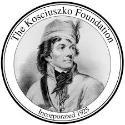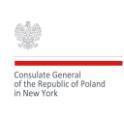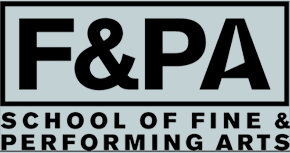
Click to go to YouTube to see the recorded Symposium
In the time of COVID-19, when our world is practicing social distancing, itself a form of displacement, the work of Jan Sawka is especially prescient and moving. Sawka's works dealing with the longing for freedom, coupled with the deep empathy and sense of loss that only exile can bring, express an expansive sense of the beauty that hope, art and nature make available to human beings.
Separated by the whole of the country, two university art museums currently exhibiting the work of the late artist have joined together to present a symposium on his profoundly touching and, ultimately, humane work. In early February, The Robert and Frances Fullerton Museum of Art (RAFFMA) at Cal State San Bernardino opened an exhibition featuring works dealing with his dream of the West, tempered by its problematic promises, titled Golden West? Jan Sawka’s California Dream. Almost simultaneously, the Samuel Dorsky Museum of Art at SUNY New Paltz opened a thematic show titled, Jan Sawka: The Place of Memory (The Memory of Place) about memory and the places through which a human life passes. The exhibitions opened to critical and public enthusiasm, and full programs of events were planned for each institution, throughout the run. Unfortunately, due to the pandemic, both museums were closed to visitors in mid-March.
The staff of both museums, together with the exhibition curators, have partnered to create an online symposium. Viewers from around the world will be able to join in as symposium speakers consider Jan Sawka's life and achievement—and the connection of his career and art with California and New York— from several points of view, including the biographical, the historical, the technical, and the personal—yielding a composite portrait of this protean and visionary artist. After each presentation, viewers will be able to engage with any or all of the speakers over live Q&A chats. Presenters from The Dorsky are Dr. Ksenia Nouril, Dr. Peter Schwenger, Dr. Tom Wolf and Beth Wilson, M.Phil. Presenters from RAFFMA are Peter Frank, Hanna Sawka (Jan Sawka's widow), Dr. Sławomir Magala, and the exhibition co-curators Hanna Maria Sawka, MFA and Dr. Frank Boyer.
Click to see the recorded Symposium on YouTube
PRESENTATIONS
"On Curating Golden West? Jan Sawka’s California Dream” – Hanna Maria Sawka, MFA and Dr Frank Boyer
Co-curators Hanna Maria Sawka and Frank Boyer will speak about the origins and development of the curatorial concept for Golden West?: Jan Sawka's California Dream, the current exhibition of Jan Sawka's work at RAFFMA. They’ll start with the original inspiration for the show and talk about how they identified and developed themes. This is a story of how a unique friendship, geopolitics and unexpected twists of fate helped to shape an exhibition.
"Art: Global, Circular, Avant-la-lettre" – Sławomir Magala
Jan Sawka (1946-2012) had experienced the hidden injuries of the Cold War before they were hidden. He has imagined virtual worlds of “Grateful Dead” before their fans got online. He has designed spaces for desires and experiences before the net.
Czy emigrant może być zbawiony?
Jan Sawka (1946-2012) byl projektantem marzen scenicznych, ulicznych, stadionowych oraz artystycznych, jazzu nad Odrą i “Grateful Dead” w Kalifornii, wizji rodzinnej Europy w Sewilli i wizji trzech pogodzonych religii w Jerozolimie. Byl u siebie w Krakowie, High Falls i Kamakurze.
"The Nether Shore: Jan Sawka and the Dream of California" – Peter Frank
Jan Sawka never lived in California, but he had fantasized about it since his boyhood. His first and best American friend lived in Los Angeles, allowing Sawka the opportunity to visit several times, and to come away with his fantasies challenged and yet revivified.
“Landscapes of the Mind: Jan Sawka from Poster to Postcard” – Dr. Ksenia Nouril
Dr. Nouril will use formal analysis and psychoanalytic theory to explore the artist’s use of these two formats of print at different points in his career. Her study of Sawka’s work is driven by the etymological connection between the poster and the postcard as objects that both communicate and circulate – two cornerstones of printmaking.
"Jan Sawka's Screen Play" – Peter Schwenger
Seeing is always selective: we filter a torrent of visual stimuli through a screen of habits and expectations. Taking its cue from an extraordinary painting by Jan Sawka, 15 Strange Things on the Clean Morning Sky, this talk will consider the ways that Sawka makes the screen visible in his work. His preoccupation with the nature of seeing is not confined to images from the material world, but has implications as well for memory, fiction, and painting itself—since a canvas is also a screen.
"Jan Sawka: Double Diaspora Visionary" – Beth Wilson
Jan Sawka’s view of the world emanated from his deeply felt Polish heritage. Given Poland’s position as both an important cosmopolitan crossroad, and subject to repeated challenges to its autonomy by the political designs of its neighbors throughout its history, Sawka grew up with a sensibility shaped by a collective experience of being profoundly rooted in a place, and yet somehow always pushed away from it. His personal and artistic development doubled back on this background through his own diasporic experience, having been forced into exile from his home country to make his way elsewhere in the world.
In this talk, I will explore some of the ways that this Polish/diasporic resonance makes itself felt in Sawka’s visionary projects, in particular focusing on his proposal for the Jerusalem Peace Monument. This as-yet unbuilt work of architecture was designed for yet another contested location, Jerusalem, claimed by three major religions as holy ground and a place which has also been at the center of conflicting historical claims, as well as waves of diaspora and displacement. Sawka’s Polish heritage and life experiences (in addition to his unique artistic vision) made him perhaps the artist best-prepared to address the complex overlap of religion and cultures addressed by this work, which are conjoined in this monument in a vivid vision of peaceful coexistence.
"Jan Sawka’s Ashokan Triptychs" – Tom Wolf
This presentation will examine Jan Sawka’s four triptych combine paintings that were inspired by the Ashokan Reservoir, where he loved to hike. They will be discussed in the context of 19th century Hudson River School paintings of local lakes, and earlier 20th century paintings of the Reservoir—and then looked at closely as unique works of art.
PRESENTERS
 Dr. Frank Boyer
Dr. Frank Boyer
Frank Boyer was the child of academic parents deeply involved in liberal religion and politics. He holds an Master of Arts degree in Humanities and a Doctor of Arts degree in Art Theory, both from the Steinhardt School of New York University. Drawing on his doctoral work, for the last several years he has been producing academic papers which focus on theoretical and educational issues in contemporary art. He teaches at SUNY New Paltz, specializing in courses that explore the interface between language and image—art criticism, art history, and seminar courses for art majors.
In the late summer of 2001, Boyer was introduced to Jan and Hanna Sawka by the late Dr. Daniel Gerould, his mentor and friend, who, for the previous decade, encouraged his research interest in Polish art and culture. On September 11, 2001, a day not easily forgotten, Jan Sawka, Hanna Sawka, Hanna Maria Sawka, and Boyer held their first meeting to discuss working together, embarking on a friendship and collaboration that has stood the test of time. Initially focused on the conceptualization and promotion of emergent projects, Dr. Boyer’s part in this collaboration has refocused to writing and speaking in order to foster Jan Sawka’s legacy, and the illumination of his extant work, as informed by studies in Polish cultural history and the theory and history of art.
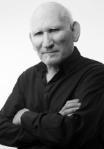 Dr. Peter Frank
Dr. Peter Frank
Peter Frank is Associate editor for Fabrik Magazine and former Senior Curator at the Riverside (CA) Art Museum. He has served as Editor of THEmagazine Los Angeles and Visions Art Quarterly and as critic for the Huffington Post, Angeleno magazine, and the L.A. Weekly. He contributes to numerous publications and has written many catalogues for exhibitions. Frank has also organized numerous theme and survey shows at myriad prestigious institutions including the Reina Sofia, and the Solomon R. Guggenheim Museum. Frank has also published many artists’ monographs, including Roller: The Paintings of Donald Roller Wilson in 1988 and Robert De Niro, Sr. in 2004.
Frank has taught at numerous universities including Pratt Institute, Columbia University's School of the Arts, the Tyler School of Art, the University of CA Irvine, Claremont Graduate School, CA State University Fullerton, the University of CA Santa Barbara, and Los Angeles, and Laguna College of Art and Design. He has lectured throughout North America and Europe.
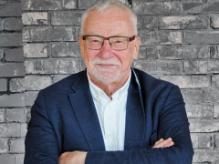 Dr. Sławomir Magala
Dr. Sławomir Magala
Sławomir Jan Magala taught cross-cultural management at the Rotterdam School of Management, Erasmus University Rotterdam, The Netherlands (1985-2015), He wrote “Class Struggle in Classless Poland”(South End Press, 1982, under the penname of Stanislaw Starski), “The Polish Student Theatre as an Element of Counterculture” (MAW Publishers, 1988, in Polish), “Cross Cultural Management” (Routledge, 2005), “The Management of Meaning in Organizations”(Emerald, 2009). Blogs online: www.magala.nl. Since 2004 the editor-in-chief of Journal of Organizational Change Management. Married to Joanna Ramlau, son Jacek and daughter Magdalena. Described as a generalist with a cause.
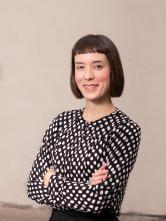 Dr. Ksenia Nouril
Dr. Ksenia Nouril
Ksenia Nouril is the Jensen Bryan Curator at The Print Center in Philadelphia. From January 2015 to September 2017, she was the Contemporary and Modern Art Perspectives (C-MAP) Fellow for Central and Eastern European Art at The Museum of Modern Art, New York. She has organized exhibitions of global modern and contemporary art at the Bruce Museum, Lower East Side Printshop, MoMA, and Zimmerli Art Museum. Ksenia lectures widely and frequently writes for international exhibition catalogues, magazines, and academic journals, including ARTMargins Online, The Calvert Journal, Institute of the Present, OSMOS, and Woman’s Art Journal. She has published two books: Art and Theory of Post-1989 Central and Eastern Europe: A Critical Anthology (co-editor and contributor, MoMA, 2018) and Ilya Kabakov and Viktor Pivovarov: Stories About Ourselves (editor and contributor, Rutgers University Press, 2019). Ksenia holds a BA in Art History and Slavic Studies from New York University and an MA and PhD in Art History from Rutgers, The State University of New Jersey.
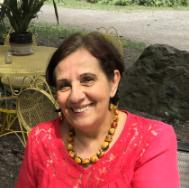 Hanna Sawka
Hanna Sawka
Hanna Sawka was born to a family of doctors and Polish WWII Resistance fighters. Her mother was decorated with three medals for her service as a paramedic during the Warsaw Rising, while her father and grandfather fought as partisans against the Nazis. As WWII Resistance fighters, they were later targeted by the communist regime. Hanna grew up in a home where the spirit of service continued, her mother providing free health care to survivors of concentration camps. When she met Jan Sawka, Hanna was a student of psychology at the Catholic University of Lublin’s Warsaw campus. Jan was already a rising star of the Polish School of the Poster, as well as an increasing political liability for the regime. Just a year after they married, together with a baby, they were exiled. Together with Jan, Hanna navigated the stresses and learning curve of surviving and eventually thriving in a new country. Her image appears in many artworks, but she never was a “muse,” becoming instead the primary manager of their business affairs. She handled a variety of tasks, such as book-keeping, buying materials, preparation for exhibitions, networking, entertaining, promotion, travelling together for shows and events, organizing photo shoots, studio assistance, mounting shows and involvement with exhibition design, exhibition logistics, and overall strategy. Hanna continues many of these activities after the passing of her life-partner, now in the capacity of the Director of the Jan Sawka Estate. In her own words, “My work hasn’t ended.”
-195x165.jpg) Hanna Maria Sawka, MFA
Hanna Maria Sawka, MFA
Hanna Maria Sawka holds an MFA in Film, TV and Theater Directing from the Polish National Film School in Lodz, a BA cum laude from Smith College in English and Theater. She teaches New Media in a full-time capacity at SUNY Orange. Her most recent film, “Beyond Iconic: Photographer Dennis Stock,” was a finalist at the São Paulo International Film Festival and an Official Selection at DOC NYC, Starz Denver, and other festivals. She has also directed professionally for television (crime reenactments for Polish National Television) and the theater. Together with her mother, Hanna “Hanka” Sawka, Hanna Maria co-manages the estate of her late father, Jan Sawka. She began curating exhibitions in 2012, when, together with Jan Sawka, she co-curated an exhibition titled The Japanese Touch: Masterworks of Japanese Print-Making at Mohonk Arts in High Falls, NY. In 2012, together with Debra Klein, she co-curated the critically lauded Personal Equilibrium exhibition of Jan Sawka’s hand-painted journals at the Stevenson Library at Bard College, Annandale-on-Hudson, (Nov. 2012 – Feb. 2013), which turned out to be the first posthumous exhibition of work by her father. In 2013, together with Evonne Davis, she co-curated Reflections on Everyman: The Work of Jan Sawka at Gallery Aferro in Newark, New Jersey, which was accompanied by a symposium at Rutgers University’s Paul Robeson Gallery.
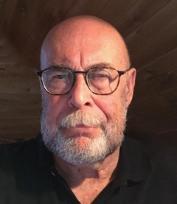 Dr. Peter Schwenger
Dr. Peter Schwenger
Peter Schwenger is the author of six books, the most recent of which is Asemic: The Art of Writing (University of Minnesota, 2019). He is a Professor Emeritus of Mount St. Vincent University, and for ten years was Resident Fellow of the Theory Centre at the University of Western Ontario. He now lives in a cabin in the Nova Scotia woods, and goes into town once a week for a night of Argentine tango.
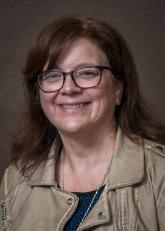 Beth Wilson, M.Phil
Beth Wilson, M.Phil
Beth E. Wilson is an art historian, critic, and curator. A Lecturer in Art History at SUNY New Paltz, she teaches courses in the history of photography, film, and contemporary art. She has curated exhibitions at institutions including the Samuel Dorsky Museum of Art and the Center for Photography at Woodstock. Her articles and essays have appeared in a wide range of art and photography journals, including Blindspot, Chronogram, Arts Magazine, and Tema Celeste, and she recently published an article entitled “The Corporate Creation of the Photojournalist: Life Magazine and Margaret Bourke-White in World War II,” in Journal of War & Culture Studies (UK).
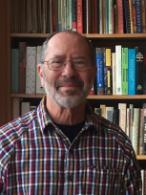 Dr. Tom Wolf
Dr. Tom Wolf
Tom Wolf is Professor of Art History, Bard College, NY. An artist, he has had paintings exhibited at Artists Space, New York; Los Angeles Institute of Contemporary Art; Koslow Gallery, Los Angeles and Art Gallery of Western Australia. He is a recipient of Andrew W. Mellon Fellowship, and Winterthur Museum and Library Fellowships.
About Jan Sawka
Jan Sawka was a visual artist, painter, printmaker, graphic artist, set designer, and architect. Already known internationally as a member of the Polish School of the Poster, he was exiled from Poland in 1976 and settled in New York City with his family in 1977, where he illustrated commentary for the Op-Ed page of the New York Times and designed graphics and sets for Off-Broadway theaters, as well as launching a successful gallery career as a painter. In 1989, he designed a monumental art-installation for the Grateful Dead’s 25th Anniversary tour. He won major awards including the “Oscar de la Peinture” and “Special Prize of the President of France” at the International Festival of Painting in Cagnes-sur-Mer in 1975, the Japanese Cultural Agency Award (1994), a Gold Medal in Multimedia at the 2003 Florence Biennial of Contemporary Art, and the “Excellence in Architecture Award” from the American Institute of Architects (2010). Learn more at jansawka.com.
About RAFFMA
The Robert and Frances Fullerton Museum of Art, nationally accredited by the American Alliance of Museums, houses a collection that includes Egyptian antiquities, ceramics and contemporary art, and hosts ca. 10-12 temporary exhibitions a year. Located at Cal State San Bernardino, RAFFMA presents the largest public display of ancient Egyptian art in Southern California. The exhibition, Journey to the Beyond: Ancient Egyptian in the Pursuit of Eternity, will be on display through April 2021. Visit the RAFFMA website for more information.
About The Dorsky Museum
Through its collections, exhibitions and public programs, the Samuel Dorsky Museum of Art supports and enriches the academic programs at the College and serves as a center for Hudson Valley arts and culture. With more than 9,000 square feet of exhibition space distributed over six galleries, The Dorsky Museum is one of the largest museums in the SUNY system. Since its official dedication in 2001, The Dorsky has presented more than 100 exhibitions, including commissions, collection-based projects, and in-depth studies of contemporary artists including Robert Morris, Alice Neel, Judy Pfaff, Carolee Schneemann and Ushio Shinohara.
Organized in conjunction with


